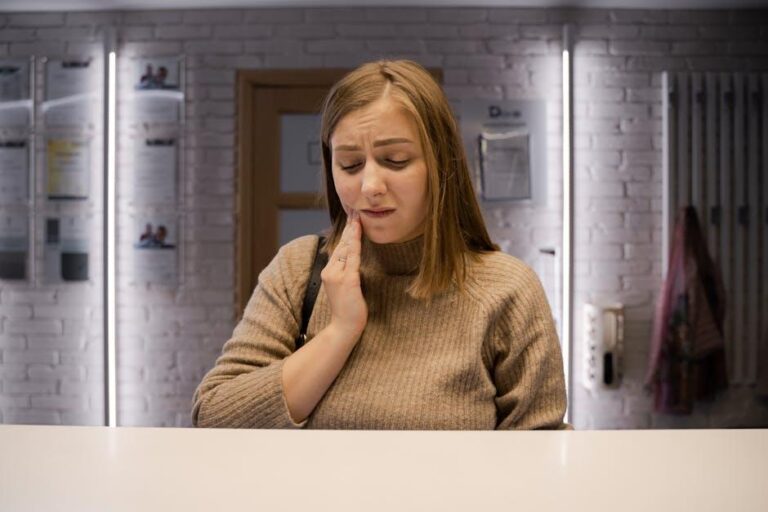1 in 3 Kids Has Dental Problems, Poll Finds – U.S. News & World Report
According to a recent poll reported by U.S. News & World Report, one in three children in the United States suffers from dental problems. This alarming statistic sheds light on the rising issue of oral health among kids and emphasizes the urgent need for awareness, prevention, and better access to pediatric dental care. In this article, we will explore the findings from the poll, discuss the common dental issues kids face, outline preventive tips for parents, and highlight the benefits of early dental care.
Understanding the Scope: What the Poll Reveals
The poll, conducted across a diverse group of parents and healthcare professionals, revealed that:
- 33% of children experienced at least one dental problem in the past year.
- Common problems included tooth decay, cavities, gum inflammation, and tooth sensitivity.
- Children from lower-income households were disproportionately affected.
- Lack of regular dental checkups was strongly linked to increased dental issues.
These findings resonate with dental health experts who warn that children’s oral issues are often overlooked until pain or infection arises.
Common Dental Problems in Children
Many parents underestimate the importance of dental health until visible problems appear. Here’s a breakdown of the most common conditions affecting kids:
| Dental Problem | Description | Typical Symptoms |
|---|---|---|
| Tooth Decay (Cavities) | Damage caused by acids from bacteria breaking down sugar | Visible pits, sensitivity, toothache |
| Gingivitis | Inflammation of gums often due to poor oral hygiene | Redness, swelling, bleeding during brushing |
| Enamel Hypoplasia | Thin or weak enamel making teeth vulnerable | Discolored or rough teeth surfaces |
| Dental Trauma | Injuries to teeth from falls or accidents | Chipped, broken, or displaced teeth |
Why Are Dental Problems So Prevalent Among Kids?
There are several contributing factors behind the high rate of dental issues in children:
- Poor Oral Hygiene Habits: Many children do not brush or floss adequately, missing plaque removal.
- Diet High in Sugars: Frequent consumption of sweets and sugary beverages accelerates tooth decay.
- Limited Access to Dental Care: Economic and geographical barriers prevent routine checkups.
- Lack of Parental Awareness: Some caregivers may not prioritize dental visits or understand early signs of problems.
Benefits of Early Detection and Pediatric Dental Care
Visiting a dentist regularly from an early age has undeniable benefits for kids, such as:
- Prevention of Serious Issues: Early cleanings and exams help catch problems before they worsen.
- Reducing Dental Anxiety: Positive first experiences ease future visits and encourage lifelong care.
- Establishing Healthy Habits: Professionals educate families on proper brushing and nutrition.
- Customized Treatments: Timely interventions such as sealants or fluoride treatments protect vulnerable teeth.
Practical Tips to Protect Your Child’s Dental Health
Parents can take several simple but effective steps to reduce dental problems and improve overall oral health among their children:
- Start Early: Clean gums with a soft cloth before teeth erupt; schedule the first dental visit by age one.
- Supervise Brushing: Ensure kids brush twice daily for two minutes using fluoride toothpaste.
- Encourage Healthy Eating: Limit sweets, juice, and sodas; promote vegetables, dairy, and water.
- Use Protective Gear: Mouthguards for kids playing contact sports reduce injuries.
- Regular Checkups: Keep dental appointments every six months or as recommended.
Sample Daily Dental Care Routine
| Time | Activity | Purpose |
|---|---|---|
| Morning | Brush with fluoride toothpaste | Remove plaque and freshen breath |
| After Meals | Rinse mouth or brush if possible | Reduce acid and food particles |
| Evening | Brush and floss before bed | Prevent overnight bacterial growth |
Case Study: Improving Oral Health in Affected Communities
In several U.S. communities facing high dental problem rates, targeted intervention programs have shown success. For example, a school district launched a “SmileSafe” initiative which included:
- Free dental screenings and sealant applications on-site
- Parent workshops on nutrition and dental hygiene
- Partnerships with local dentists to provide low-cost care
Within one year, dental problems among participating children dropped by nearly 20%, proving that awareness plus accessible care can make a measurable impact.
Firsthand Experience: A Parent’s Perspective
Jessica M., mother of two young children, shares her journey after discovering her son had multiple cavities during a routine checkup:
“I always thought cavities only happened if kids ate tons of candy. But it turns out, my son’s picky eating habits and lack of flossing caused his teeth to suffer. After talking with our pediatric dentist and following their advice, we changed our diet and daily hygiene routine. Now, my kids look forward to their dental visits, and I feel more confident protecting their smiles.”
Conclusion: Prioritizing Children’s Dental Health Is a Must
The poll’s finding that 1 in 3 kids in America faces dental problems should serve as a wake-up call to families, healthcare providers, and policymakers alike. Early education, routine dental care, and healthy lifestyle choices are critical pillars to reversing this trend.
By understanding common issues, taking preventive actions, and ensuring access to professional dental services, we can help children enjoy stronger teeth, painless smiles, and better health well into adulthood.
If you’re a parent, caregiver, or educator, don’t wait until dental problems arise—start fostering good oral health habits today and schedule that next dental appointment!


